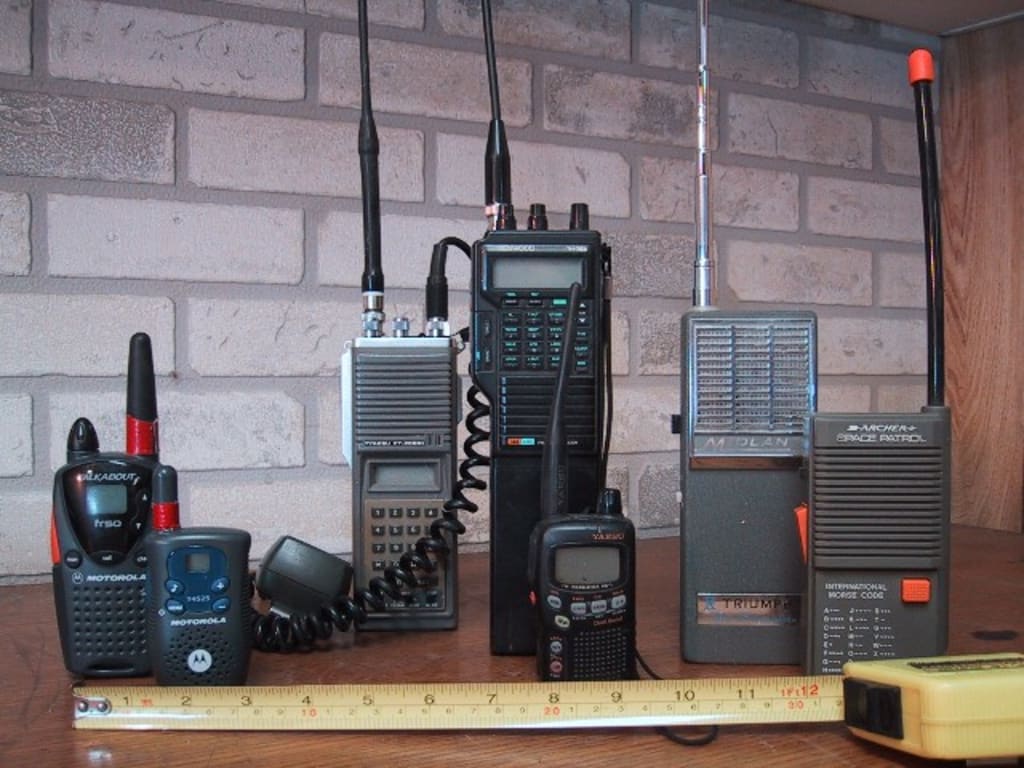Walkie Talkie Range: How Far Can They Really Reach?
Unveil the mysteries of Walkie Talkie reach! Explore terrain challenges and optimal conditions for seamless communication on any adventure.

In the realm of communication devices, walkie talkies have carved out a unique niche, offering reliable and instant communication in various situations. From outdoor adventures to professional settings, walkie talkies are valued for their portability and ease of use. However, one common question that often arises is: how far can walkie talkies really reach? In this comprehensive guide, we delve into the intricacies of walkie talkie range to provide you with a clear understanding of their capabilities.
Factors Affecting Walkie Talkie Range
Before we delve into specific range estimations, it's essential to understand the factors that influence the effective range of walkie talkies. Several variables come into play, including:
1. Transmit Power
The transmit power of a walkie talkie directly impacts its range. Higher transmit power generally results in a more extended range, allowing communication over greater distances.
2. Terrain
Terrain plays a significant role in determining the practical range of walkie talkies. Open areas with minimal obstructions enable signals to travel farther compared to densely wooded areas or urban environments where buildings and other structures may obstruct the signal.
3. Antenna Quality
The quality and design of the antenna also affect the range of a walkie talkie. Walkie talkies with high-quality antennas can transmit signals more efficiently, resulting in better range performance.
4. Weather Conditions
Weather conditions, particularly atmospheric interference such as rain, fog, or thunderstorms, can impact the range of walkie talkies. In adverse weather, signal strength may weaken, reducing the effective range.
5. Interference
Interference from other electronic devices or radio signals can disrupt communication and limit the range of walkie talkies. Choosing the right frequency and channel can mitigate interference issues.
Understanding Range Ratings
Walkie talkie manufacturers typically provide range ratings based on ideal conditions, which may not always reflect real-world scenarios. These ratings often indicate the maximum theoretical range achievable in optimal settings, such as unobstructed line-of-sight communication over flat terrain.
Practical Range Considerations
While manufacturers' range ratings offer a useful benchmark, it's essential to consider practical limitations when assessing the actual range of walkie talkies. In real-world scenarios, factors such as terrain, obstructions, and environmental conditions can significantly impact communication range.
1. Line-of-Sight Communication
In ideal conditions with unobstructed line-of-sight communication, walkie talkies can achieve their maximum range potential. However, in most situations, obstacles such as buildings, trees, and terrain features can limit line-of-sight communication, reducing effective range.
2. Urban Environments
In urban environments characterized by tall buildings and structures, the range of walkie talkies may be significantly reduced due to signal blockage and interference. Users may experience shorter communication distances compared to open rural areas.
3. Outdoor Adventures
During outdoor activities such as hiking, camping, or skiing, walkie talkies can offer reliable communication within a moderate range. However, dense foliage, mountainous terrain, or inclement weather conditions may limit range capabilities.
4. Professional Applications
In professional settings such as construction sites, security operations, or event management, walkie talkies are invaluable tools for instant communication. However, range limitations must be considered when planning communication networks in complex environments.
Maximizing Walkie Talkie Range
While walkie talkie range is subject to various limitations, several strategies can help maximize communication range and reliability:
1. Choose the Right Equipment
Selecting walkie talkies with higher transmit power and quality antennas can improve range performance. Additionally, opting for models with multiple frequency bands allows users to switch to less congested channels, minimizing interference.
2. Optimize Antenna Placement
Positioning walkie talkie antennas vertically and away from obstructions can enhance signal propagation. Users should ensure antennas are fully extended and oriented correctly for optimal performance.
3. Maintain Clear Line of Sight
Whenever possible, maintain a clear line of sight between communicating parties to maximize range capabilities. Avoid obstacles and elevation changes that can obstruct signal transmission.
4. Monitor Weather Conditions
Stay informed about weather conditions, especially in outdoor environments where adverse weather can affect signal strength. Be prepared to adjust communication strategies based on changing weather patterns.
5. Minimize Interference
Take proactive measures to minimize interference from other electronic devices or radio signals. Selecting appropriate frequency bands and channels can help mitigate interference issues, ensuring clear communication.
Conclusion
Walkie talkies offer versatile communication solutions for a wide range of applications, from outdoor adventures to professional use. While understanding the range capabilities of walkie talkies is essential, it's equally crucial to consider practical limitations and environmental factors that can impact communication range. By implementing best practices and selecting the right equipment, users can maximize the effectiveness of walkie talkies in various scenarios.
About the Creator
Enjoyed the story? Support the Creator.
Subscribe for free to receive all their stories in your feed. You could also pledge your support or give them a one-off tip, letting them know you appreciate their work.





Comments
There are no comments for this story
Be the first to respond and start the conversation.